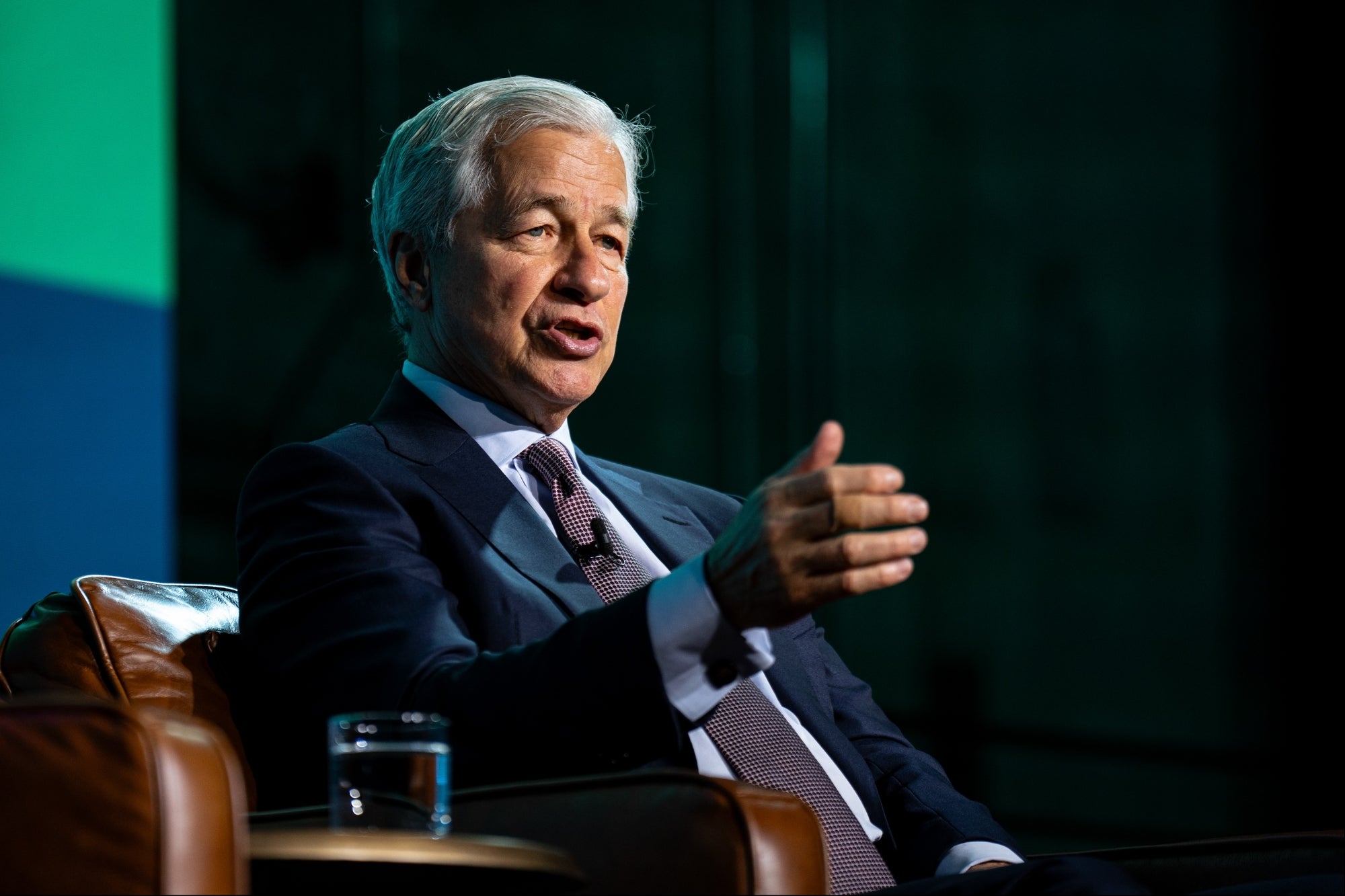I Have Over 214,000 Followers on TikTok. Here's What I'm Doing Right Now In Case a Ban Happens. A TikTok ban would have substantial implications for small businesses and content creators. If TikTok goes under, here's what I'm planning to do.
By Neil Patel Edited by Mark Klekas
Opinions expressed by Entrepreneur contributors are their own.
A TikTok ban is a scary thought for many of us in the marketing world. I have over 214,000 followers on the platform. It's become an integral part of my business strategy, helping me connect with a younger audience and grow my brand.
That said, a potential ban isn't 100% set in stone yet. Whichever way TikTok's evolution goes, businesses and marketers have an opportunity to get ahead of the changes, but you want to act now. Here are my thoughts on the potential TikTok ban, its implications for entrepreneurs, and the steps I'm taking to capitalize on the situation.
Why might TikTok be banned?
The primary reason behind the potential TikTok ban is the growing concern over the app's Chinese ownership and the associated data security risks. U.S. officials worry that the Chinese government could access sensitive user data through TikTok, posing a threat to national security. This could include things like email addresses and location information. A bill has officially been signed into law that:
- Designates TikTok as a national security threat.
- Requires TikTok's parent company, ByteDance, to relinquish ownership within a year of the bill being signed or face a ban.
- Restricts app stores and web hosting services from offering TikTok.
- Establishes a framework for the president to identify and act against foreign-controlled social media apps.
TikTok's response has been to encourage users to contact their representatives, describing the ban as a potential infringement on free speech. So does that instantly mean that TikTok is gone? Not at all. On top of the one-year relinquishment period, chances are that legal challenges mean that it could stay active months after that period expires.
In the event that ByteDance does not sell and all legal challenges fail, you may still see some users in the U.S. accessing TikTok via virtual private networks (VPNs). That said, this would drastically reduce the user base, and marketing on TikTok would be less effective.
TikTok ban implications
One of the first major ripple effects of a potential TikTok ban would be changing where Gen Z goes for their content. To give you an idea of the platform's current hold on this group, note that:
- Gen Z comprises over 60% of TikTok's global user base.
- 76% of Gen Z report using TikTok.
- 49% of Gen Z users make purchases after discovering products on the platform.
- Gen Z has $450 billion in purchasing power globally, including $360 billion in the U.S. alone.
Related: 5 Communication Hacks to Capture Your Gen Z Audience
Any brand with Gen Z as a major focus is going to lose its main channel to reach that group. While these users will eventually find other digital homes, that's little comfort to your business. While TikTok would still be fully functional in other markets, the lack of access to U.S. users would make a TikTok-first marketing strategy a risky proposition.
Beyond just Gen Z, the implications of a TikTok ban are substantial for entrepreneurs. For many of us, TikTok has been a key driver of growth, allowing us to reach new audiences, showcase our products or services and build brand awareness. Losing access to this platform could result in a significant drop in engagement, traffic, and, ultimately, revenue.
Moreover, the ban could create a void in the social media landscape, leaving entrepreneurs to navigate a new terrain without a clear alternative to TikTok's unique features and algorithms.
What you should do for now
So, with this potential ripple effect on the horizon, what should businesses on TikTok do? The answer is a two-part approach. First, don't abandon ship.
As my team and I see it, the best strategic move for brands is to double down on TikTok engagement. Why so? Many brands and influencers will take this period of uncertainty as a time to reduce their presence. This means less competition for you when it comes to your content visibility and premium influencer partnerships.
Also, consider the possibility of a resolution in which TikTok doesn't fully disappear. If that happens, the brands that either keep or grow their TikTok investment will be in a better position on the platform compared to competitors when things start to stabilize.
This is a unique window for businesses to set themselves up for success in the long term.
For now, at least, the audience on TikTok is still there to engage with. So, I'm still active there for now, and I encourage you to remain active there as well.
At the same time, though, this makes for a good lesson about diversifying your strategy.
Future-proof your social media presence
It bears repeating that we don't know how the TikTok ban will go. It's possible that other social media platforms come under scrutiny if a ban comes to pass. If there's one major lesson here, it's that you don't want to fully rely on one platform.
So, what does diversification entail, exactly? Try to grow your presence on other platforms, such as Instagram, YouTube, Snapchat, Pinterest, and Facebook. You might even want to consider retail media platforms like Netflix, Amazon, Disney, and Walmart.
If you want to capture a potential TikTok audience exodus, Meta and Instagram are likely your best bets. Meta already has the infrastructure and ad targeting capabilities for paid marketing, and Reels offers the short-form video content that TikTok users love.
From the paid perspective, you should reassess your current investments in TikTok. Reducing from 50% to 25% is generally a good starting point, and chances are that Meta is a good starting point. Instagram's Creator Marketplace is also a great starting point to keep your influence with influencers and digital communities.
I'm refocusing my efforts on other platforms myself, and here are a few things I've learned during this process.
- Adapt your content strategy: I'm tailoring my content to suit the unique features and audiences of each platform. For example, I'm creating longer-form content for YouTube and more visually appealing posts for Instagram.
- Leverage existing TikTok audience: I'm encouraging my TikTok followers to engage with me on other platforms by promoting my accounts and creating incentives for them to follow me elsewhere.
- Explore emerging platforms: I'm keeping an eye on emerging social media platforms that could potentially fill the void left by TikTok. By being an early adopter, I can gain a competitive advantage and establish a strong presence on these new platforms. This is similar to how Threads got a boost from people looking to leave Twitter.
- Shift your content testing ground: If you previously used TikTok as a primary launch platform for user-generated content, consider reversing this strategy. Start with Meta platforms to test and perfect creative campaigns before deploying.
- Build an owned audience: I'm investing more in my email list and website to cultivate an audience that I have direct access to, regardless of any changes in the social media landscape.
- Stay on top of consumer insights and trends: Target demographics like Gen Z are some of the main users of social media for brand discovery and shopping. Use insights from platforms like GWI Core and eMarketer to adjust marketing strategies in real-time, depending on which platforms they favor.
Conclusion
The legislative storm around TikTok is still swirling, and we can't fully predict where it will end up. As a result, the best thing that your team can do is be adaptive. TikTok is still seeing a lot of use, especially among groups like Gen Z, so you don't want to toss that away just yet. At the same time, though, this is a bit of a wake-up call about relying too heavily on a single platform.
Adaptive is the mindset that your team wants to have. Double down if you are seeing success, but also diversify your business's digital presence. This helps you maintain a consistent and present marketing message across all major platforms — no matter what shifts come next.











